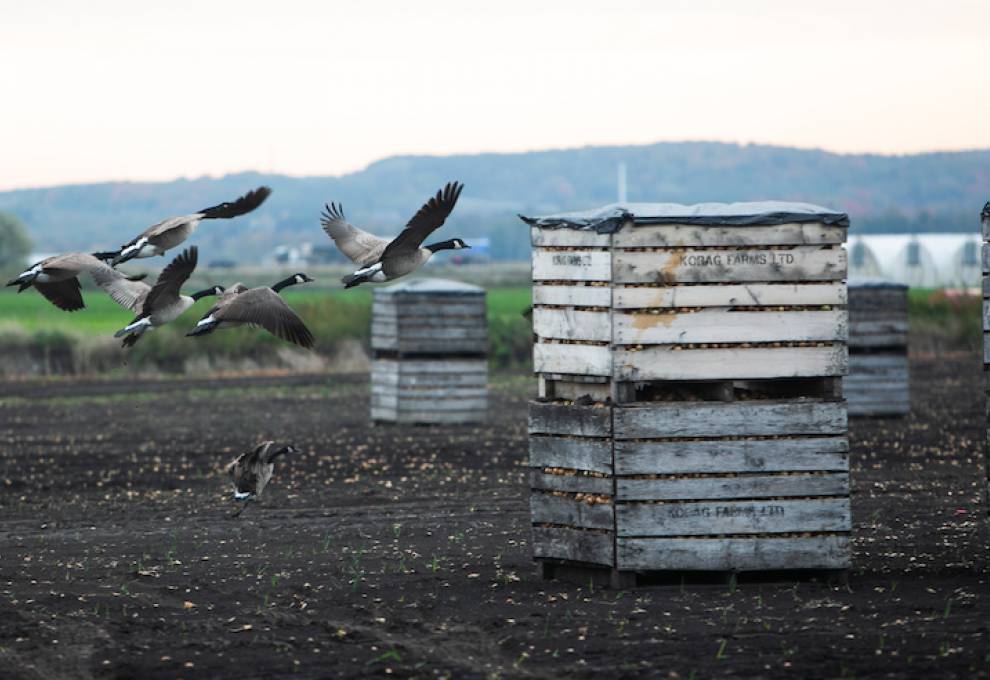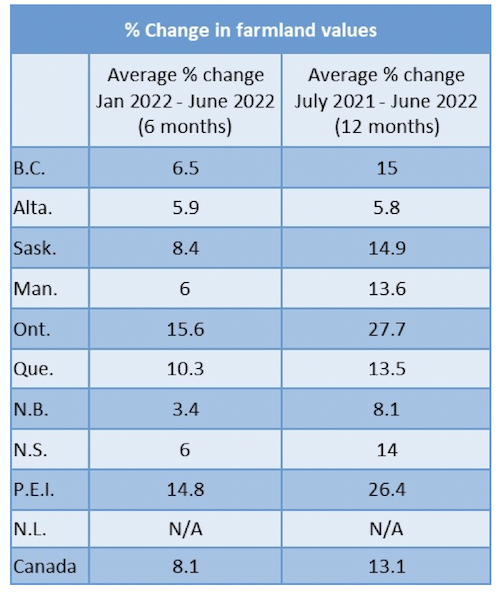
Average farmland values continued to increase in most parts of Canada, despite higher interest rates in the first half of 2022, according to a mid-year review by Farm Credit Canada (FCC).
“Strong farm cash receipts, buoyed by robust commodity prices, have managed to quell some of the profitability challenges from higher interest rates and farm input costs,” said J.P. Gervais, FCC’s chief economist. “Producers are still making strategic investments in their operations and buying farmland, which is in short supply and high demand. This healthy farmland market is a good indication there is confidence and optimism in the future of the industry among producers.”

The highest average farmland value increases were reported in Ontario (15.6 per cent), Prince Edward Island (14.8 per cent) and Québec (10.3 per cent), followed by Saskatchewan (8.4 per cent), which was closest to the national average increase of 8.1 per cent. More modest increases were reported in the rest of the provinces.
There were insufficient transactions in the Yukon, Nunavut, Newfoundland and Labrador to fully assess farmland values.
Most land transactions were agreed to prior to the most significant interest rate increases. However, Gervais believes the more recent increases will not completely deter some producers from making land purchases that make sense for their operations.
“There’s little doubt that higher borrowing costs will slow the demand for farmland,” he said. “But the fact that the supply of farmland available is limited and farm incomes are trending in the right direction could offset the impact of interest rates increases.”
Provinces with a higher percentage of arable land, such as Saskatchewan and Alberta, seem to experience a slower pace of increase in land values, according to the mid-year review. Ontario’s average increase was bolstered by the central regions of the province, where competition for arable land is strong but supply is limited.
Gervais recommends operators maintain a risk management plan to protect their businesses against unforeseen circumstances, such as increases in borrowing costs and unfavourable movements in commodity prices.
Source: Farm Credit Canada October 4, 2022 news release

Add new comment